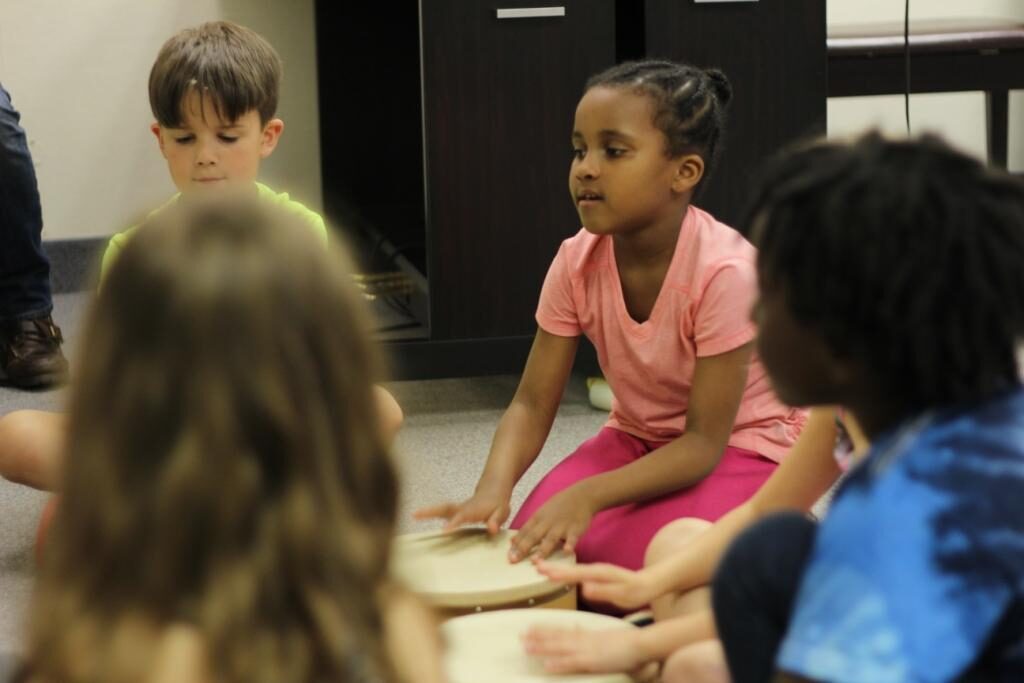In teaching young children piano, children’s music educators will find it helpful to explain the origins and history of the instrument they are playing. Knowing the evolutionary story behind the piano helps children learn about cultural traditions and historical events. The history of the piano is interesting because it can be classified as both a stringed instrument as well as a percussion instrument, while even having an element of wind instruments. While its invention is most often attributed to one man, Bartolomeo Cristofori, the pianos evolution can be traced as far back as ancient Greece around 500 BC. The monochord, or kanon in Greek, consisted of one metal string was stretched over a hollow body of wood called a resonator. While sometimes used for music, the monochord was more often used by scientists to study sound. Being long enough to divide into different sections and placed over the body in various ways, it was useful in that it demonstrated different chords in a visible way. The monochord was often used for tuning other instruments, even all the way through the 19th century, and also helped singers to learn pitch.
Not being satisfied with just one single string, inventors and scientists soon added more strings to create polychord instruments that contained two or more separate sounded strings. Over time, polychords started appearing both with a bridge (a device that supports the strings and transmits the vibration to another structural component) and without a bridge. With use of a bridge, several notes on a polychord could be played together in combination, whereas without a bridge, the notes were commonly played separately.
Over time the Polychords evolved through a series of instruments into the harpsichord and clavichord, both which used a keyboard to direct the plucking or striking of the strings. The history of instruments being played with keyboards originated from the pipe organ, where bursts of air are sent through different sized pipes to make sounds. So, it could be argued that the piano is actually a wind instrument as well!
When considering whether the strings of an instrument are plucked or struck, another ancestor of the piano deserves honorable mention. Still played today, the hammer Dulcimer is a bridgeless polychord instrument that uses small hammers to strike the strings. Originating in the East, the Dulcimer spread to Europe in the 11th century. Unlike the Harpsichord that was limited in volume and strength because the strings were plucked, the hammered clavichord allowed the player a greater level of range and expression. The clavichord became very popular during the Renaissance period of the 14th century, and used a brass rod called a tangent to strike the strings. It provided the ability for the strings to vibrate for as long as the keys were depressed. While an improvement, the clavichord still did not provide the level of volume that many players and composers desired.
Around the turn of the 18th century, Bartolomeo Cristofori, a gifted maker of keyboard instruments including the harpsichord, created the pianoforte, which in Italian means both loud and soft. Cristofori’s invention provided a mechanism that released the hammer from the string right after pressing the key, allowing the strings to vibrate longer and the player to strike them at different strengths. First considered a feminine instrument, the pianoforte was very expensive and primarily used by the wealthy. Women who played it were considered good prospects for marriage. However, these very progressive female pianists inspired many compositions by composers such as Hayden, Mozert and Beethhoven, all of whom played the pianoforte. As a sign of the times, men were the only concert pianists, but these composers started the piano down a path of global popularity.
Other than the addition of 34 strings and improved materials, Cristofori’s design of the pianoforte is not very different than today’s modern grand piano. Space requirements and technology have given rise to other modern versions such as the upright piano, but the fundamental elements remain the same.
While children’s piano teachers may consider this explanation of the evolution of the piano to be too far advanced to interest children, what will capture their attention and imagination is that a piano is inspired by of all three types of instruments at the same time – strings, percussion, and wind. A keyboard originating from a wind instrument controls percussive hammers to strike a range of strings. Early childhood music educators can use this explanation to provide context to many of the concepts and techniques of playing the piano.






